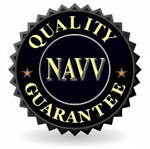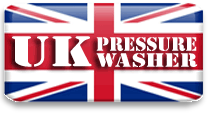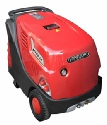







LOW PRESSURE WASHERS



STATIC CABINET WASHERS










COLD WATER WASHERS



HOT WATER / STEAM WASHERS






PETROL / DIESEL WASHERS


PIPEWORK INSTALLATIONS


DRY STEAM GENERATORS

COMMERCIAL EQUIPMENT



FLOORCARE


OTHER PRODUCTS


VACUUM CLEANERS


CHEMICALS & CONSUMABLES
ESSENTIALS
Email us: info@uk-

Member of the National Association of Vehicle Valeting

KNOWLEDGE BASE


USED EQUIPMENT





FINANCING YOUR PURCHASE



Free Equipment Deals
Finance Tax Advantages



EQUIPMENT SERVICING




CLEANING KITS



Dustbin Cleaning Kit
**Special Feature

Voted BEST COMMERCIAL PRESSURE WASHER SITE by www.traffic-

01773 4321 28
:: Lavor
:: Edge
:: Cleanwell
:: Mazzoni
:: Demon
At UK Pressure Washer Network we are able to offer FREE and impartial advice on all your commercial cleaning requirements on all leading brands including;
:: Karcher
:: Kranzle
:: Alto
:: Kew
and all other leading manufacturers









Click HERE for a UK Pressure Washer Price List


UK Pressure Washer Network… Local Service - Nationwide

Get A
No Obligation
Quote

www.uk-


START YOUR OWN PRESSURE
WASHER BUSINESS HERE
:: Abrasive / Sand Blast Cleaning Explained
Abrasive blasting is the operation of forcibly propelling a stream of abrasive material against a surface under high pressure to make it smoother, remove surface contaminants or to roughen it.
There are several variants of the process, such as bead blasting, sandblasting, shot blasting and sodablasting.
Surface Cleanliness and Roughness
Abrasive-
Cleanliness reflects the degree of presence of undesirable residual contaminants on the surface, whereas roughness refers to the micrometric shape of the surface, called the "surface profile."
Operations
Abrasive blasting is a method of propelling abrasive using a compressed gas (typically air) or pressurized liquid (typically water) as the propellant. There are numerous generic terms for this application usually related to the abrasive media used. Common terms include bead blasting, sandblasting, shot blasting and sodablasting.
The large variety of applications creates the need for a diversity of equipment:
* Portable blast equipment (aka blast pot): Dry abrasive blasting applications are typically powered from a diesel air compressor. Most applications involve a pressurized vessel that contains the abrasive and meters it into the compressed air stream. Wet blasting is accomplished by injecting the abrasive into a pressurized water stream or creating a slurry of abrasive and water that is pressurized or introduced into a compressed air stream. Wet blasting is often used in applications where the minimal dust generation is desired. Portable applications may or may not recycle the abrasive and portable dry blasting generally does not attempt to contain or minimize the dust generated from the operation.
* Automated blasting : A fully automated blasting provides surface preparation and coating applications under cover to minimize the effects nature can have on prepared steel, with minimum or no impact to the environment.
* Blast Cabinet: A blast cabinet is essentially a closed loop system that allows the operator to blast the part and recycle the abrasive. A typical blast cabinet consists of four components; the containment (cabinet), the abrasive blasting system, the abrasive recycling system and the dust collection. The operator blasts the parts from the outside of the cabinet by placing his arms in gloves attached to glove holes on the cabinet, viewing the part through a view window and, typically, turning the blast on and off using a foot pedal or treadle. Automated blast cabinets are also used to process large quantities of the same component and may incorporate multiple blast nozzles and a part conveyance system.
o There are three types of blast systems used in a blast cabinet. Two systems (siphon and pressure) are dry and one is wet:
+ A siphon blast system (aka suction blast system) uses the compressed air to create vacuum in a chamber (known as the blast gun). The negative pressure pulls abrasive into the blast gun where the compressed air directs the abrasive through a blast nozzle.
* A pressure blast system incorporates a pressurized vessel. The abrasive is stored in the pressure vessel then sealed. The vessel is pressurized to the same pressure as the blast hose attached to the bottom of the pressure vessel. The abrasive is metered into the blast hose and conveyed by the compressed gas through the blast nozzle.
o
+ Wet blast cabinets use a slurry system that injects the slurry into a compressed gas stream. Wet blasting is typically used to create a surface profile when the frictional heat of dry blasting would damage the part.
* Blast room: This is a larger version of a blast cabinet with the exception that the blast operator works inside the room. A blast room always has three of the four components of a blast cabinet: the containment, the abrasive blasting system and the dust collector. Most blast rooms have recycling systems ranging from manual recycling (sweeping and shoveling the abrasive back into the blast pot) to full reclaim floors that convey the abrasive pneumatically or mechanically to a device that cleans the abrasive prior to recycling.
Wheel blasting: Wheel blasting or shot blasting is typically categorized as an airless blasting operation because there is not a propellant (gas or liquid) used to propel the abrasive. Rather, a centrifugal wheel is used to propel the abrasive against the substrate. Wheel machines are a high-
Hydro-
Micro-
Abrasives Used
Silica sand: Silica sand is the most commonly used abrasive and typically has the most negative impact. The silica sand quickly breaks up and creates large quantities of dust, which when exposed to the operator can cause silicosis, a debilitating lung disease. When silica sand is sold for the purpose of blasting, it is often coated with resins to control the dust from the breaking sand. Note: most larger silica sand companies will not sell sand for the purpose of sandblasting due to the high volume of dust created by the sand breaking when hitting the object.
Metallic, synthetic and mineral: These other types of abrasives are growing in popularity due to the low dust creation and reclamation of material. Each of these abrasives report significantly less dust and waste than sand abrasives.
Organic: Typically ground nut shells, fruit kernels or baking soda. These soft abrasives are used for cleaning of brick or stone work or the removal of graffiti without damaging the underlying material. Also used for the removal of conformal coatings from printed circuit boards for rework. Additionally, organic media such as nut shells and ground corn cob are often used for removing failing finish from log homes.
Setup and Equipment
The most common used are commercial bench-
Equipment for abrasive blasting usually consists of but is not limited to a hand-
Safety
Cleaning operations using abrasive blasting can present risks for workers' health and safety, especially in air blasting applications. Although many abrasives used in blasting booths do not have a hazardous component (steel shot and grit, cast iron, aluminum oxide [aka corundum], garnet, plastic abrasive and glass bead), other abrasives (silica sand, copper slag, nickel slag, and staurolite) have varying degrees of hazard (typically free silica or heavy metals). However, in all cases their use can present serious danger to operators, such as burns due to projections (with skin or eye lesions), falls due to walking on round shots scattered on the ground, exposure to hazardous dusts, heat exhaustion, creation of an explosive atmosphere, and exposure to excessive noise. Blasting booths and portable blaster's equipment have been adapted to these dangers. OSHA (Occupational Safety and Health Administration) mandates engineered solutions to potential hazards, however lobbying has allowed silica sand to continue to be used even though most commonly used blast helmets are not sufficiently effective at protecting the blast operator (respiratory protection is approved by NIOSH -
Typical safety equipment for operators that are open air blasting or blasting in a blast room include the following:
* Positive pressure blast hood or helmet -
* Grade D air supply -
* Ear protection -
* Body protection -
Sandblasting used to be performed as an open-
In 1918 the first sandblasting enclosure was built, which protected the worker with a viewing screen, revolved around the workpiece, and used an exhaust fan to draw dust away from the worker's face.[1]
Several countries and territories now regulate sandblasting such that it may only be performed in a controlled environment using ventilation, protective clothing and breathing air supply (as shown in the top image).
Sand Blasting
Sandblasting or bead blasting is a generic term for the process of smoothing, shaping and cleaning a hard surface by forcing solid particles across that surface at high speeds; the effect is similar to that of using sandpaper, but is faster and provides a more even finish with no problems at corners or crannies. Sandblasting can occur naturally, usually as a result of particles blown by wind causing aeolian erosion, or artificially, using compressed air. An artificial sandblasting process was patented by Benjamin Chew Tilghman on October 18, 1870.
Sandblasting equipment typically consists of a chamber in which sand and air are mixed. The mixture travels through a hand-
Historically, the material used for artificial sandblasting was sand that had been sieved to a uniform size. In the early 1900s, it was initially assumed that sharp-
Other materials for sandblasting have been developed to be used instead of sand; for example, carborundum grit,steel shot and grit, copper slag, powdered slag, glass beads (bead blasting), metal pellets, dry ice, garnet[3], powdered abrasives of various grades, and even ground coconut shells, corncobs, walnut shells, and baking soda (sodablasting) have been used for specific applications and can produce distinct surface finishes. Some commercial grade blasters are specially designed to handle multiple blast abrasives. These blasters are commonly referred as multi-
Glowing Effect
Many coarser media used in sandblasting often result in energy being given off as sparks or light on impact. The colours and size of the spark or glow varies significantly, with heavy bright orange sparks from steel shot blasting, to a faint blue glue often invisible in daylight from garnet grit.
Applications
Sandblasting can also be used to produce three dimensional signage. This type of signage is considered to be a higher end product as compared to the flat signs. These signs often incorporate gold leaf overlay and sometimes crushed glass backgrounds which is called smalts.
Sandblasting can be used to refurbish buildings or create works of art (carved or frosted glass). Modern masks and resists facilitate this process, producing accurate results.
Sandblasting techniques are used for cleaning boat hulls, as well as brick, stone and concrete work. Sandblasting is used for cleaning industrial as well as commercial structures, but is rarely used for non-
HOME | SERVICES | SPARE PARTS & ACCESSORIES | CONTACTS
PRESSURE WASHERS: Domestic Jet Washers | Cold Water Electric | Cold Diesel / Petrol Driven | Wall Mounted / Fixed Cold | Hot Water 240v | Hot Water / Steam 240v | Hot Water / Steam 415v | Petrol / Diesel Driven | Electrically Heated | Hot / Steam Petrol Diesel Driven | Trailer-
FLOOR CARE: Floor Polishers | Scrubber Driers | Sweepers | Wet & Dry Vacuums | Spray Extraction Units | Cleaning Kits |
CHEMICALS: Chemicals |
CLEANING KITS: Cleaning Kits Index | Truck & Bus Washing Kit | Car & Van Washing Kit | Dustbin Cleaning Kit | Exterior Valeting Kit |Interior Valeting Kit | Path & Patio Kit | Bespoke Cleaning Kits |
USED EQUIPMENT: Used Equipment For Sale | Cleaning Equipment Wanted
FINANCE: Finance Options | FlexiPay Leasing | Contract Hire | Interest Free Credit | Free Equipment Deals | Finance Tax Advantages
EQUIPMENT SERVICING: Service & Maintenance | GoldStar Maintenance | Book An Engineer | Postal Repair System
KNOWLEDGE BASE: Safe Pressure Washer Use | Washer Maintenance Tips | Winter Maintenance Tips | Nozzle Size Glossary | Traffic Film Remover Explained | Pressure Washers Explained |
Abrasive Blasting | Soda Blasting Explained | Dry Ice Blasting Explained | Nozzle Size Glossary |
Carpet & Upholstery Cleaning | Carpet Cleaning | Fabric Wet Cleaning | Fabric Dry Cleaning | Fabric Restoration


Abrasive Cleaning Explained...




Get A
No Obligation
Quote
